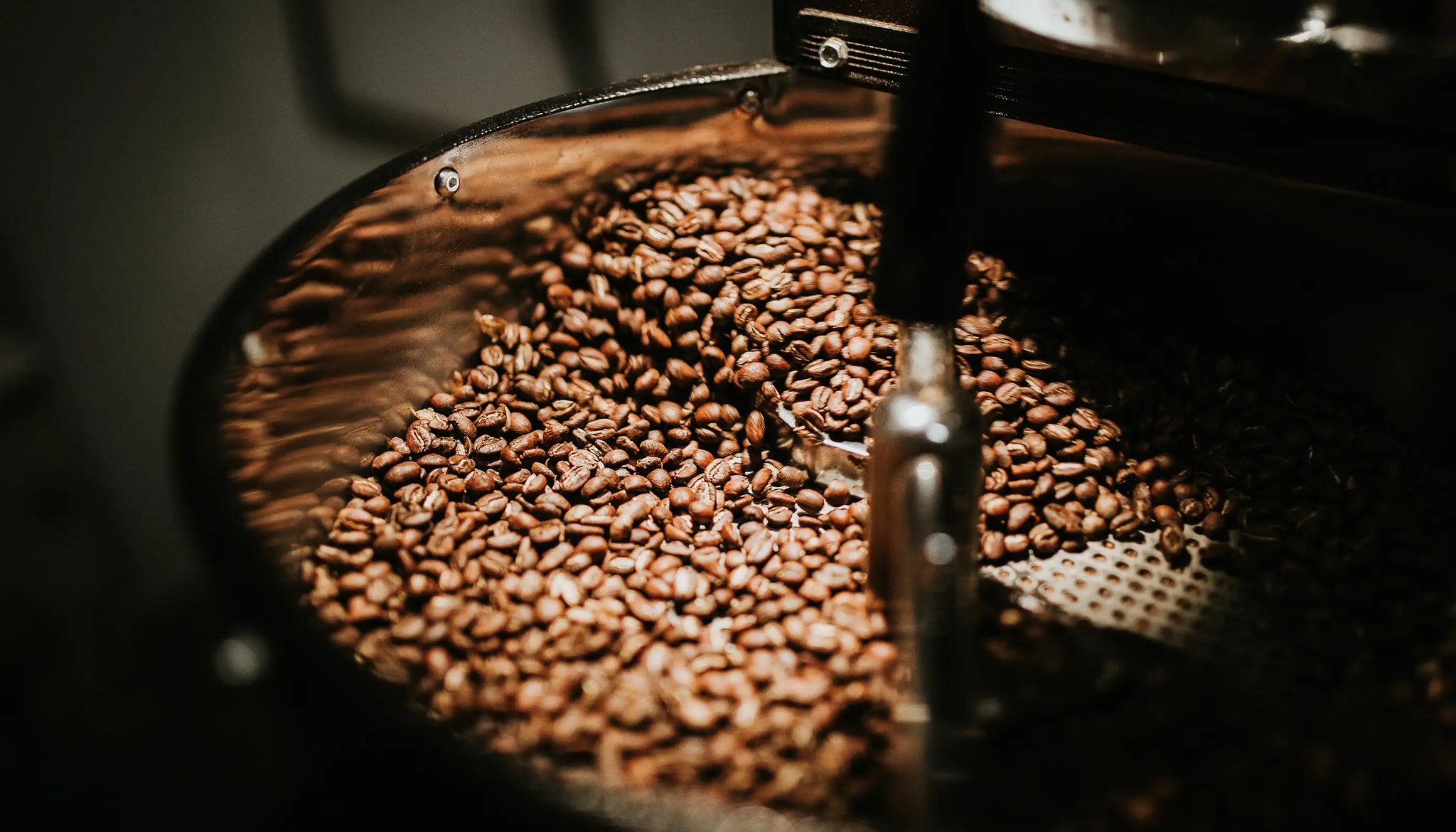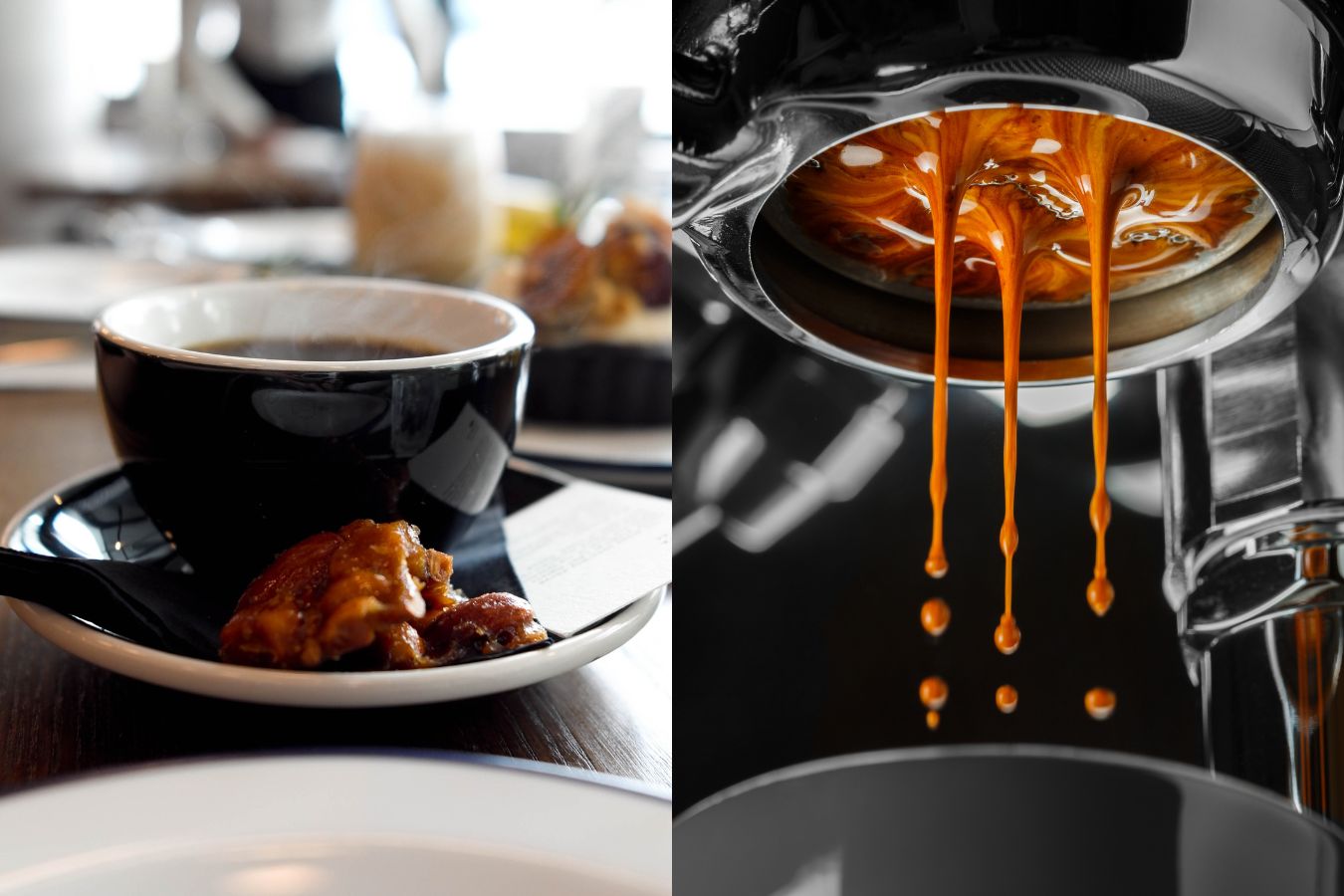Exploring the Origins Behind Top-Tier SOE Single Origin Espresso
Exploring the Origins Behind Top-Tier SOE Single Origin Espresso
Blog Article
Checking Out the Abundant Flavors of Coffee Beans: a Deep Dive Into Espresso and Blended Coffee Beans
When you check out the rich flavors of coffee beans, you reveal an intricate globe where each variety brings its own personality to your mug. Comprehending the origins, processing methods, and roasting methods can change your coffee experience. As you browse through the art of coffee and the imagination behind blended coffees, you'll start to value the subtleties that make each sip unique. What you'll uncover following may alter the method you enjoy your early morning mixture.
The Origins of Coffee Beans: Discovering Terroir and Taste Profiles
When you take a sip of coffee, you're not just appreciating a beverage; you're experiencing a rich tapestry of flavors shaped by the beans' beginnings. Each area produces one-of-a-kind taste profiles influenced by climate, elevation, and soil. Beans from Ethiopia usually rupture with intense, fruity notes, while those from Colombia tend to supply a balanced, nutty sweet taste.
As you check out various origins, you'll see exactly how terroir-- the environmental factors affecting a crop-- plays an essential function - Single Origin Espresso. The exact same coffee range can taste dramatically various depending upon where it's expanded
When you think about these aspects, you start to appreciate the intricacy behind your mug. Each sip narrates of the land and the farmers who supported the beans. So, next time you delight, consider the trip your coffee took before it reached your hands, and savor those elaborate tastes that reflect its beginning.
Understanding Espresso: The Art and Science Behind the Brew
When you think about coffee, it's not nearly the strong taste; it's additionally concerning the methods that bring it to life. Comprehending exactly how different preparation approaches influence preference can change your developing experience. Allow's discover the details of espresso prep work and reveal the one-of-a-kind flavor profiles that make each cup unique.
Coffee Prep Work Strategies
Espresso preparation is both a scientific research and an art, combining exact strategies with a deep understanding of coffee. To start, you'll desire to choose top quality, fresh roasted beans and grind them finely for suitable extraction (Single Origin Espresso). The grind size is vital; too rugged, and your espresso will be weak, as well fine, and it'll be bitter
Following, tamp the premises uniformly in the portafilter to ensure uniform removal. When you secure it right into the maker, purpose for a developing temperature level in between 190 ° F and 205 °
F.As you pull the shot, look for the excellent removal time-- around 25-30 secs. The outcome ought to be a rich, creamy espresso with a lovely layer of crema on the top. With method, you'll understand these techniques.
Flavor Accounts Clarified
The globe of coffee offers an abundant tapestry of flavor accounts that can raise your coffee experience. When you take that very first sip, you'll discover a balance of anger, sweetness, and level of acidity. Each espresso bean brings one-of-a-kind notes, from floral and fruity to nutty and chocolaty. Light roasts usually showcase bright acidity and lively tastes, while dark roasts existing deeper, bolder tones.
A well-crafted mix might balance the intense notes of an Ethiopian bean with the rich, chocolatey touches of a Brazilian bean. Embrace the journey of finding coffee's diverse tastes, and you'll change your coffee ritual right into an exciting experience.
Handling Methods: Exactly How They Impact Flavor and Aroma
While it may seem that the origin of coffee beans is one of the most significant element in determining their flavor and scent, the handling approaches made use of post-harvest play an equally necessary function. You'll locate that these approaches can drastically modify the last preference account of your cup.
For example, the washed procedure gets rid of the fruit from the beans before fermentation, typically bring about a cleaner, brighter taste. Meanwhile, the natural procedure leaves the fruit undamaged during drying, resulting in a sweeter, fruitier profile.
Various other techniques, like honey processing, strike an equilibrium, enabling some fruit mucilage to continue to be, giving an unique intricacy.
Each processing strategy communicates with the beans' intrinsic attributes, enhancing or silencing specific tastes and fragrances. When you sip that coffee or mixed coffee, bear in mind that the journey from cherry to mug is affected not just by beginning but also by how those beans were refined.
Roasting Techniques: Opening the Complete Possible of Coffee Beans
Roasting methods are important for disclosing the full capacity of coffee beans, as they transform raw, eco-friendly beans into the fragrant, delicious coffee you appreciate. The selection of toasting method-- light, medium, or dark-- considerably affects taste accounts.
A slower roast at lower temperatures enables for complicated tastes to create, while a quicker roast can intensify bitterness. By mastering these strategies, you'll disclose a globe of taste, elevating your coffee experience to brand-new heights.
The Magic of Blended Coffee: Creating One-of-a-kind Flavor Experiences
Creating an unique flavor experience with mixed coffee can change your morning routine into an expedition of taste. By combining various beans from various areas, you can reveal a harmony of flavors that elevate your mug to new heights. Each mix offers a distinctive account, stabilizing sweetness, acidity, and body to create something truly unique.
When you select a blend, you're not simply selecting a coffee; you're picking a trip throughout diverse landscapes and cultures. Try out different mixes allows you to uncover your individual favorites, whether you appreciate fruity notes or abundant, chocolatey touches.

Sampling Notes: Identifying the Subtleties in Your Mug
As you sip your coffee, you might discover a spectrum of flavors dancing on your palate, each revealing the ins and outs of the beans. You might taste the brilliant acidity reminiscent of citrus or the deep, abundant notes comparable to dark chocolate. The sweet taste could stimulate honey or caramel, balancing the total profile magnificently.
Focus on the body of the coffee-- does it really feel light and ventilated, or is it complete and velvety? The surface, too, offers ideas; a sticking around aftertaste might mean nuttiness or flower undertones.

Do not neglect to explore the unique attributes of various origins, as each region presents distinct flavors - Single Origin Espresso. For example, Ethiopian coffees commonly present fruity notes, while Colombian beans may showcase an extra rounded sweet taste. By acknowledging these subtleties, you'll grow your gratitude for every cup, elevating your coffee experience to new elevations

Developing Methods: Taking Full Advantage Of Flavor Removal for every single Bean
When you check out the various developing techniques, you'll discover that each strategy can substantially affect the flavor profile of your coffee. From French press to pour-over, each method extracts various compounds, enhancing or muting particular notes. For instance, utilizing a French press allows oils to stay in the brew, producing a richer preference, while pour-over emphasizes clearness and brightness.
Temperature and grind size also play important duties. A coarser grind works best for cool brews, while a fine work is excellent for coffee. Exploring with water temperature-- between 195 ° F and 205 ° F-- can reveal covert tastes, as well.
Do not forget soaking time; a fast extraction can result in sour notes, while over-extraction might produce resentment. By adjusting these variables, you can make the most of taste removal and absolutely raise your coffee experience. Delight in the trip of finding what method finest matches your taste buds!
Regularly Asked Questions
What Is the Suitable Water Temperature Level for Developing Coffee?
The suitable water temperature for developing coffee's in between 195 ° F and 205 ° F. If you use water that's as well warm, you'll over-extract flavors; as well cool, and you won't draw out sufficient. Go for that sweet place for the best mixture!
Exactly How Does Work Dimension Affect Coffee Flavor?
Grind dimension considerably impacts coffee taste. Better grinds extract a lot more oils and tastes, resulting in a bolder preference, while coarser grinds return a lighter taste. Adjusting grind dimension aids you achieve your wanted coffee address account.
Are There Health And Wellness Perks Associated With Drinking Coffee?

What Is the Distinction In Between Arabica and Robusta Beans?
Arabica beans are smoother and sweeter, usually including fruity flavors, while robusta beans are stronger with a bitter preference and higher caffeine content. You'll discover these differences in aroma and brewing experience.
Exactly How Can I Store Coffee Beans for Freshness?
To save coffee beans for quality, keep them in a closed container, away from wetness, heat, and light. You'll keep their flavor longer if you just grind what you need right prior to developing.
Exploring the Abundant Flavors of Coffee Beans: a Deep Dive Into Coffee and Blended Coffee Beans.
When you check out the abundant flavors of coffee beans, you uncover an intricate world where each variety brings its very own character to your mug.When you take a sip of coffee, you're not just enjoying a beverage; you're experiencing a rich tapestry of tastes shaped by the beans' beginnings.Roasting methods are vital for revealing the complete possibility of coffee beans, as they transform raw, eco-friendly beans into the aromatic, flavorful coffee you appreciate.As you drink your coffee, you may notice a range of flavors dancing on your taste buds, each exposing the intricacies of the beans.
Report this page